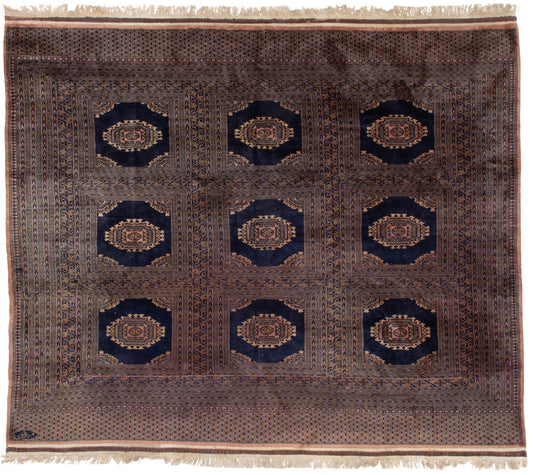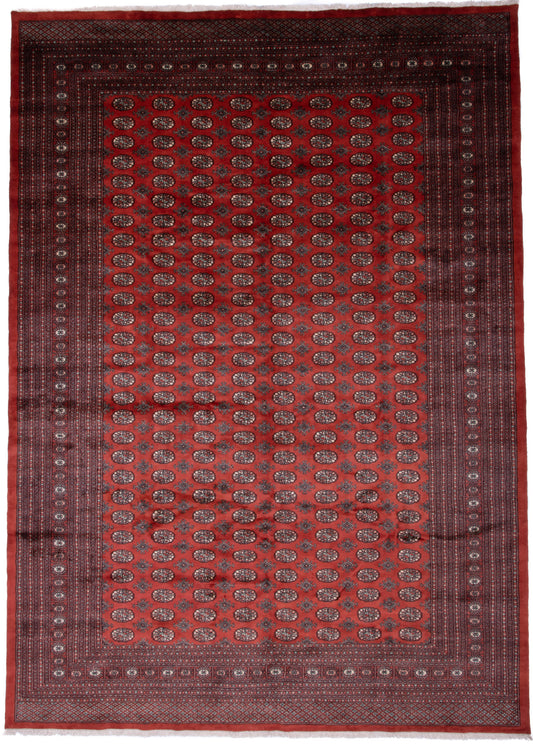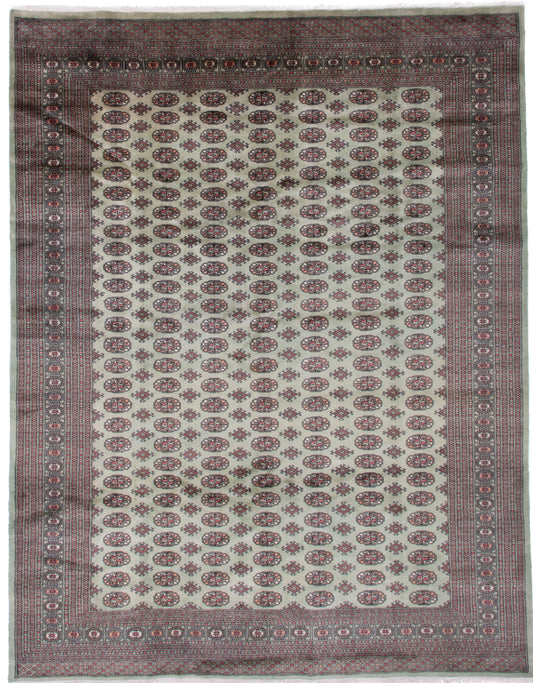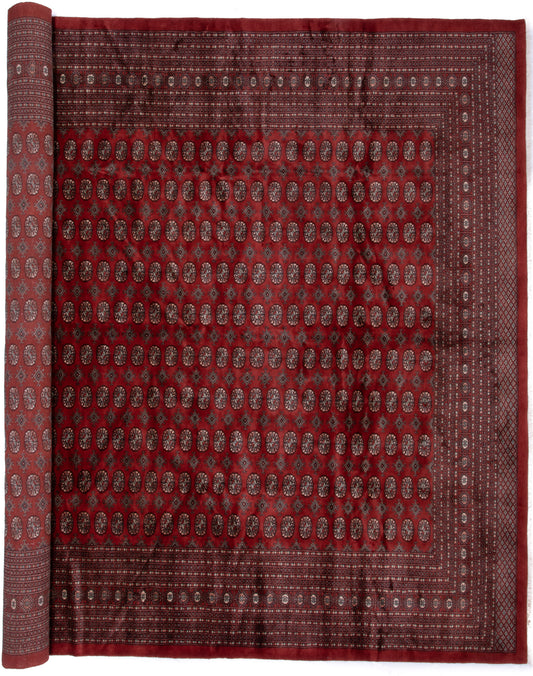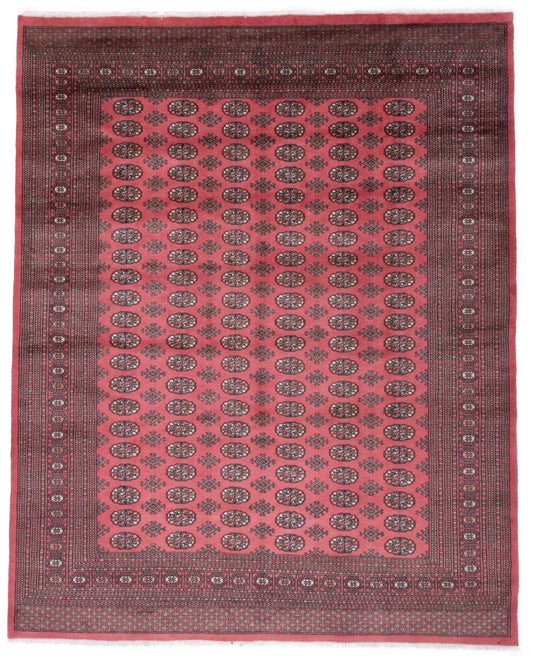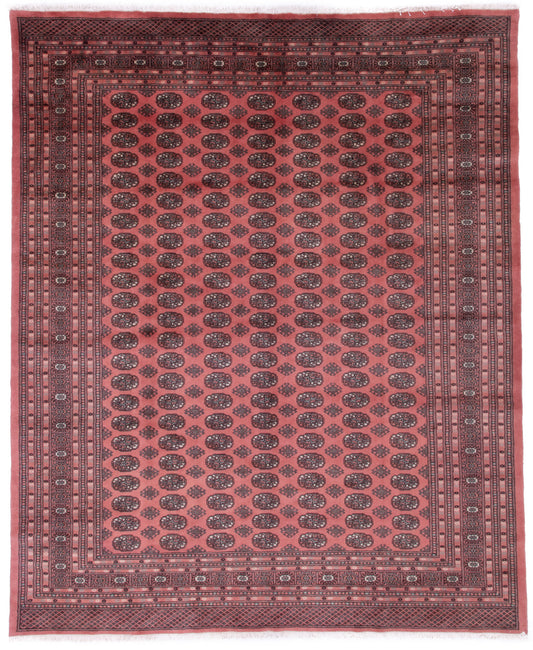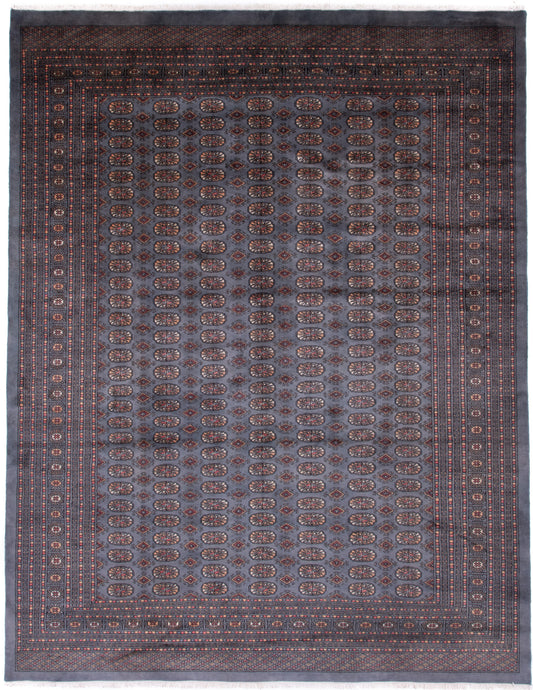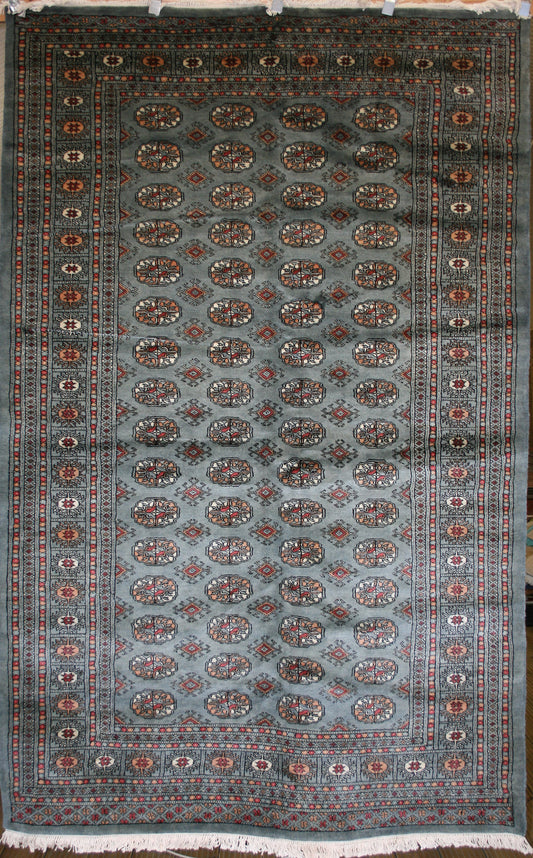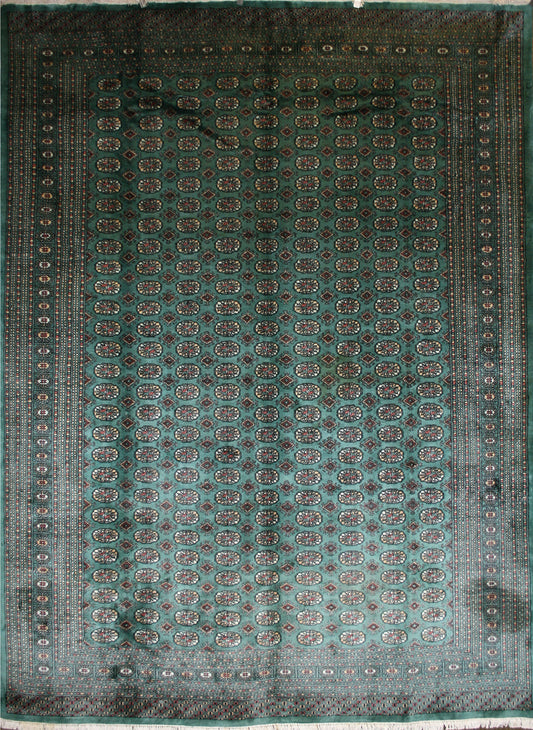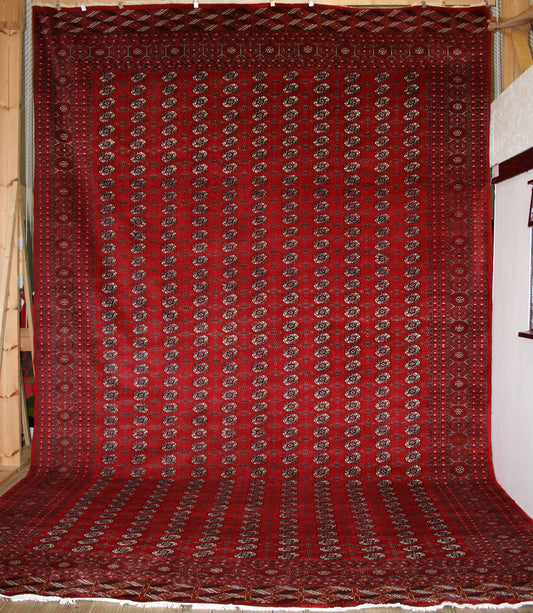Bokhara Rug History & Origin Guide
A Guide to Bokhara Rugs
Discover the rich history and artistry of Bokhara rugs (also known as Bukhara), renowned worldwide for their deep, rich colours and intricate patterns. These rugs, originating from the region of Bokhara in present-day Uzbekistan, are a testament to the enduring tradition of rug-making in Central Asia.
The History of Bokhara
The region of Bokhara, now part of modern Uzbekistan, has a long and storied history that dates back to the ancient Silk Road. As a crucial trading hub, Bokhara was a melting pot of various cultures and influences, resulting in a rich artistic tradition that continues to this day.
The History of Bokhara Rugs
With the region's deep roots in trade and commerce, the craft of rug-making flourished in Bokhara. Rugs from this region are known for their distinctive Tekke design, named after the Tekke tribe of Central Asia. This design typically features a rich red base colour with repeating oval or diamond patterns.
Design and Colours of Bokhara Rugs
Bokhara rugs are most famous for their deep red or burgundy colour, although they can also be found in a range of other colours, including greens, blues, and browns. The designs are typically symmetrical and consist of repeating oval or diamond shapes, often referred to as 'guls'.
The Materials and Knotting Details
Bokhara rugs are usually made of wool, known for its durability and warmth. The knotting technique used is the Persian or Senneh knot, which allows for intricate detailing in the designs. The knot density of these rugs can vary, but they are generally very high, resulting in a plush, velvety feel.
The Motifs and Patterns
The motifs used in Bokhara rugs are deeply symbolic, often drawing from Islamic art and architecture. The primary motif is the 'gul', a stylised floral or geometric pattern that is repeated throughout the rug. These guls can vary in design, but they typically feature sharp, angular lines and intricate detailing.
Comparing Bokhara and Jaldar Rugs
While both Bokhara and Jaldar rugs are renowned for their intricate designs and high-quality craftsmanship, there are some key differences between them. Bokhara rugs are typically made of wool and feature the Tekke design with repeating guls, whereas Jaldar rugs from Pakistan are often made of a wool and silk blend and have a more floral, curvilinear design.
Moreover, Bokhara rugs are known for their deep red colour, while Jaldar rugs can feature a wider range of colours. However, both types of rugs are highly durable and make a striking addition to any interior space.
Modern Production of Bokhara Rugs
Even though Bokhara rugs take their name from the ancient city of Bukhara in Uzbekistan, most of the rugs known as 'Bokhara' today are actually made in Pakistan. This is a result of historical migration and cultural exchange along trade routes. Pakistani artisans adopted the Bokhara design, adding their unique influences and techniques to this traditional art form.
Modern Bokhara rugs from Pakistan are often woven using high-quality wool and sometimes even silk for added luxury. The methods and tools used have remained largely unchanged, allowing the craft to retain its authenticity and charm. Pakistani Bokhara rugs are known for their high knot density, giving them a plush, velvety feel that is a delight underfoot.
Comparing Bokhara and Turkmen Rugs
The original Bokhara design was influenced by the rugs of the Tekke tribe, one of the major tribes of Turkmenistan. Thus, there are strong similarities between Bokhara and Turkmen rugs, especially in the use of the 'gul' motif and the preference for deep, rich reds and maroons.
However, there are also significant differences. Turkmen rugs are often more geometric and less detailed than Bokhara rugs, with a more limited colour palette. In contrast, Bokhara rugs can include more colours, and their designs are often more intricate, with a greater emphasis on the decorative 'gul' motifs.
Over time, the term 'Bokhara' has come to refer to a style rather than a specific origin, and the Bokhara style has been interpreted and adapted by weavers in various regions, including Pakistan, Iran, and Afghanistan, resulting in a fascinating range of variations on the classic Bokhara design.
Bokhara Today: A Rich Legacy
Today, Bokhara continues to be a centre for rug-making, with local artisans preserving the traditional techniques and designs of their ancestors. Owning a Bokhara rug is not just owning a beautiful piece of home decor, but a piece of history and culture.
Bokhara rugs carry a rich legacy that transcends borders. They encapsulate the skill and artistry of generations of weavers, making each rug a unique testament to this enduring craft. Start your own journey into this captivating world by exploring our current collection of Bokhara rugs.
Browse Our Current Selection of Bokhara Rugs
-
Semi-Antique Pak-Persian Bokhara Square Rug
Regular price £2,545.00Regular priceUnit price / per£5,095.00Sale price £2,545.00Sale -
Pak-Persian Bokhara Rug
Regular price £4,675.00Regular priceUnit price / per£5,465.00Sale price £4,675.00Sale -
Pak-Persian Bokhara Rug
Regular price £3,455.00Regular priceUnit price / per£4,225.00Sale price £3,455.00Sale -
Pak-Persian Bokhara Rug
Regular price £7,225.00Regular priceUnit price / per£8,585.00Sale price £7,225.00Sale -
Pak-Persian Bokhara Rug
Regular price £2,655.00Regular priceUnit price / per£3,135.00Sale price £2,655.00Sale -
Pak-Persian Bokhara Rug
Regular price £2,655.00Regular priceUnit price / per£3,185.00Sale price £2,655.00Sale -
Pak-Persian Bokhara Rug
Regular price £3,585.00Regular priceUnit price / per£4,065.00Sale price £3,585.00Sale -
Pak-Persian Bokhara Runner Rug
Regular price £505.00Regular priceUnit price / per -
Pak-Persian Bokhara Rug
Regular price £1,465.00Regular priceUnit price / per -
Pak-Persian Bokhara Runner Rug
Regular price £775.00Regular priceUnit price / per -
Pak-Persian Bokhara Rug
Regular price £3,715.00Regular priceUnit price / per -
Pak-Persian Bokhara Rug
Regular price £13,385.00Regular priceUnit price / per£15,885.00Sale price £13,385.00Sale

